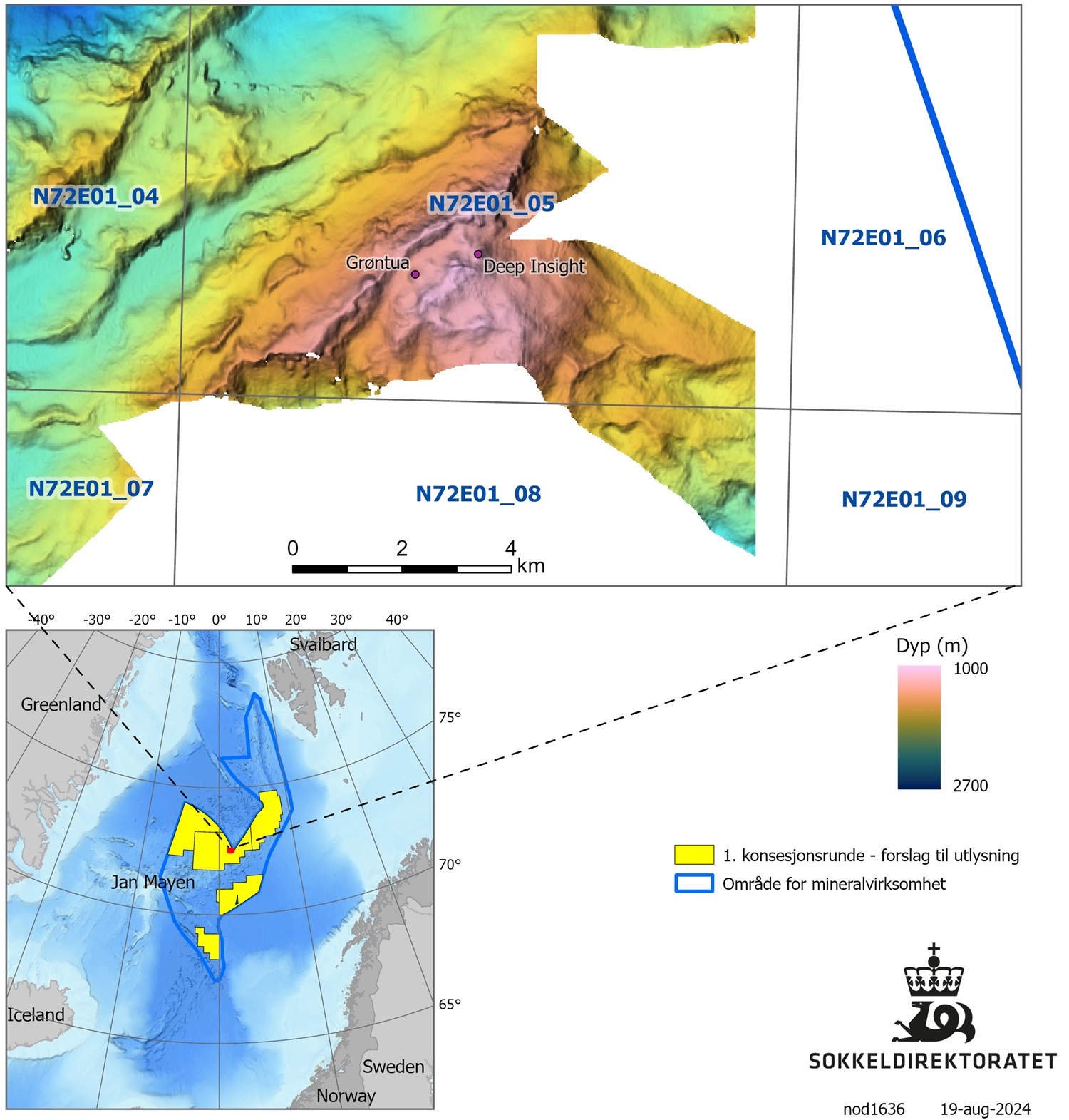New sulphide deposit on the Norwegian continental shelf (NCS)

The new deposit is located in 1175 metres of water. (Photo: Centre for Deep Sea Research /Ægir 6000)
8/23/2024 The Centre for Deep Sea Research at the University of Bergen (UiB) proved a new sulphide deposit on an expedition in the Norwegian Sea and the Greenland Sea this summer.
Data from previous surveys conducted by the Norwegian Offshore Directorate was the basis for the selected areas.
The expedition was carried out by the G.O. Sars research vessel during the period from 24 June to 12 July, based on the licence for scientific exploration, 900/2024.
The objective of the surveys was to increase knowledge about the deep sea, and both geological and environmental data was collected.
A new inactive sulphide deposit was discovered (“Grøntua”), as part of a broader survey in the area surrounding the previously proven inactive sulphide deposit called “Deep Insight”. The discovery is situated just over one kilometre from “Deep Insight” in block N72E01_05, which is part of the southern Mohns Ridge.
The new deposit is located in 1175 metres of water, has a diameter of 150 metres and extends 60 metres over the seabed.
Geological information
Geological sampling from the “Grøntua” sulphide deposit was carried out using the Ægir 6000, an underwater robot (remotely operated vehicle, ROV). Seven samples were taken from the new proven inactive sulphide deposit using a grapple . All sampling has been documented with HD-quality video.
The collected material has not yet been analysed, but preliminary observations based on the presence of a mineral called atacamite indicate a possible high copper content.
Read more about seabed minerals

Director Communication, public affairs and emergency response
Updated: 8/23/2024